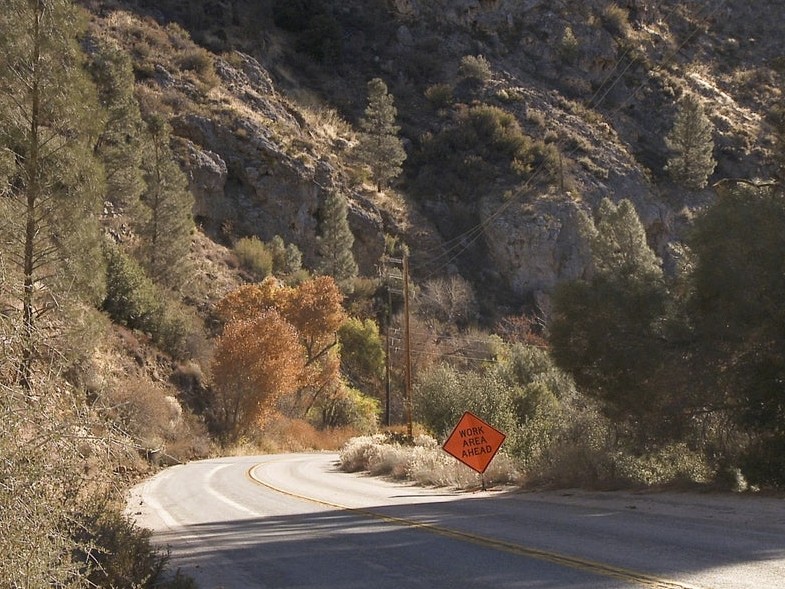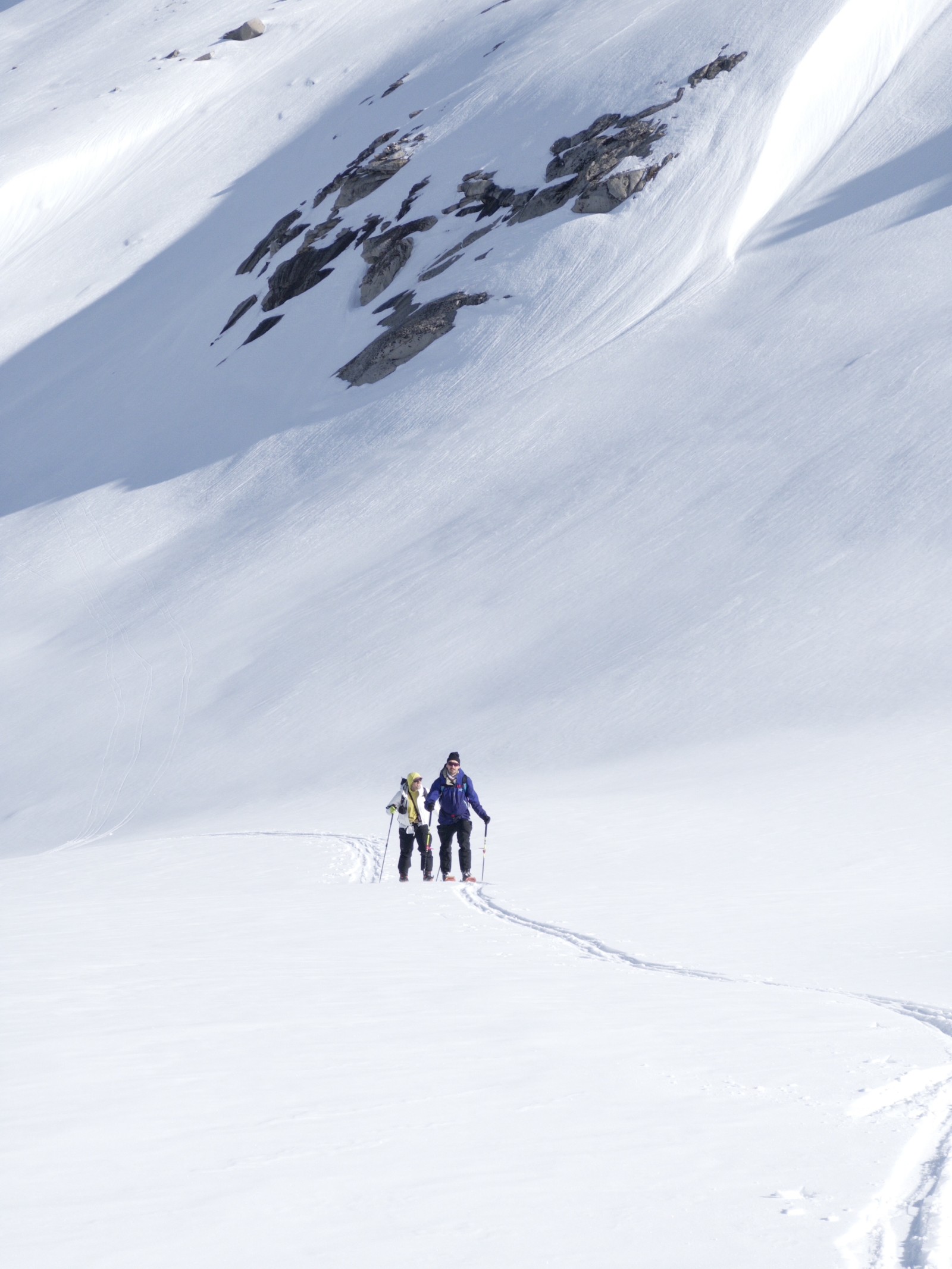James Benning makes long duration films of landscape. Yesterday evening I went to a screening of his latest work, BREATHLESS. It’s runs 1h 30m. Identical that of the Jean-Luc Godard film of the same name. During the question and answer he said of the Godard film “I don’t really care for it.”
Benning’s work is a single continuous static shot of a bend in a road framed by a canyon along the Kern river. In one sense, nothing happens. But in another, truer sense, everything happens.
At first your brain fixates on the human activity, searching for narrative. The tree-trimmers eventually move out of frame. We’re left with leaves moving, the rock formations of the canyon, the sound of water in the kern, a bird flies by.
The light shifts. Shadows fall down frame.
A roar overhead as F22 fighter jets out of China Lake buzzing the canyon is a surprise. There are more jets overhead than vehicles on the road. Spend any time in the Sierra and the profound slippage between walking a mile over 20 minutes and a fighter jet above you doing the same in 20 seconds creates an acute awareness of the expansive durational scale humans exist across.
Within BREATHLESS activity is sparse.
It’s mostly ambience.

For the audience, Benning’s work is an endurance effort. He acknowledges how demanding it is to actively view, and has mentioned how sometimes he falls asleep during screenings of his work. At the end of BREATHLESS he requested a round of applause for the audience for being so committed. Only one person exited the room out of the maybe hundred in attendance.
The audience of this screening was as much part of the work as the film itself. Your attention begins at the screen, but before long it meanders away, then back again. People adjust their posture. Chairs creak. A sneeze. You’re watching yourself watch the film by watching the audience. You perceive yourself perceiving the perceived. The hallmark of a great work is its ability to evoke this reaction. Including you in its existence.
I attended BREATHLESS a day after returning from three nights in the Sierra Nevada backcountry skiing with good friends. Trips like this are durational. My sleep is poor the first few nights at elevation. We were sharing a primitive hut with several others. Each day began at 4:30am. The next several hours passed moving uphill for long stretches, dotted with brief and rapid moments of downhill. Evenings were spent cooking and fueling, unpacking and repacking for the next day, and exchanging our individual experiences of the adventuring.

It’s an endurance effort. Blasting around the back country affects you similarly to the Benning work. I think most peak experiences in life do.
What I love about Benning’s work and endurance sport is the perceptual playing around with time dilation. Noticing the noticing. Seeing the seeing. A sort of meta-awareness of oneself in environment. Be it alpine, or on a screen.
Exiting the Sierra and rolling into a Benning screening felt remarkably cohesive.